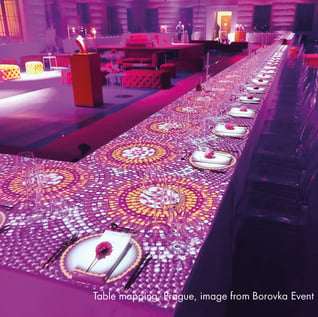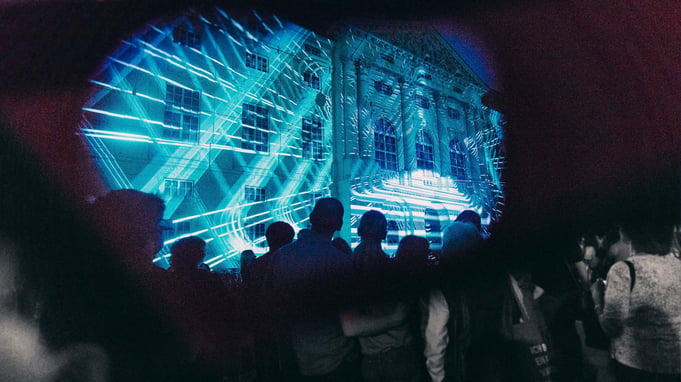From extended reality to interactive technologies, immersive experiences have taken over the live entertainment industry. Using technology as a medium and art as technology, these experiences encapsulate modern expression while pushing the boundaries of our imagination, writes Andrew Gordon, automtd andrew.
- Seeking more than a show
- Enter: Immersive experiences
- Catching up with technology
- Live entertainment in the new age
SEEKING more than a show
From multimedia fine dining to high-tech music festivals and world tours, today’s crowds demand a lot more than just a show – they want an experience. As self-expression and communication become easier through social media, content creation has risen to take over the show. Gone are the art installations we used to call “avant-garde”; now we see them daily as our lives intersect more and more with technology and design, and we know them as “experiences”.
The experiences industry is an ever-growing umbrella containing everything from art installations to live events, and from “pop-up stores” to online shopping through an AI-powered digital avatar. Contrary to the previous generation, consumers today are making a conscious shift away from material purchases in favor of memorable experiences. We want to be inspired through self-discovery, and by putting our bodies and minds through stimulating and unique surroundings. With the help of technology, creating experiences has become very commonplace as we continue to explore new combinations of media and new forms of expression to “wow” the crowd.
Enter: Immersive experiences
It is entirely possible today to create experiences that can engage many of our senses at once – These are called immersive experiences. By creating an environment so contained and surreal that it tricks the mind into thinking it is somewhere else, the audience becomes fully immersed and interacts with the environment on all levels, even if they’re not actively waving their arms around or touching their surroundings.
During the days when concerts were just about music, flashing lights, backup dancers and, if we’re lucky, some pyrotechnics, the way to get noticed was simply through big billboards – The bigger, the better. Today, it’s about Retailtainment: “The use of ambience, emotion, sound and activity to get customers interested in the merchandise and in a mood to buy” (George Ritzer). At this year’s Sónar festival in Barcelona, Spanish clothing brand Desigual created an interactive space for visitors to walk through and relax, including projections that track and illuminate your movements to create a collective, continuously evolving digital artwork: “We wanted to play a meaningful role within Sónar and not just have a stand selling product,” explains Desigual CMO Guillem Gallego.
 These subtle yet engaging environments create memorable impressions for visitors. They’re also proof that the best experiences are created when art, design and technology come together in complementary ways. Take the new Samsung KX space in London: The store features an array of technologies that enhance the visitor experience, including a 10m-wide LED screen where visitors can spray-paint using a “can of graffiti” (a Samsung S10 phone with a case) while seeing themselves live on-screen, thanks to PTZ cameras installed in the ceiling. By using technologies as simple as a smartphone, an LED screen and a tracking system, the Galaxy Graffiti wall allows visitors to freely explore Samsung’s various technologies while creating their own works of art.
These subtle yet engaging environments create memorable impressions for visitors. They’re also proof that the best experiences are created when art, design and technology come together in complementary ways. Take the new Samsung KX space in London: The store features an array of technologies that enhance the visitor experience, including a 10m-wide LED screen where visitors can spray-paint using a “can of graffiti” (a Samsung S10 phone with a case) while seeing themselves live on-screen, thanks to PTZ cameras installed in the ceiling. By using technologies as simple as a smartphone, an LED screen and a tracking system, the Galaxy Graffiti wall allows visitors to freely explore Samsung’s various technologies while creating their own works of art.
Catching up with Technology
Immersive experiences can, and do, come in all shapes, forms and sizes, but the heart of it all revolves around immersive technology. By continuously striving to create something out of the ordinary, immersive experiences push the boundaries of technology to make audiences feel as if they are a part of their surroundings. With immersive technologies, the question is not “why”, but “can we?”.
Putting the “immersive” in immersive experiences requires capturing multiple senses at once, which begins with spectacular audiovisual effects, followed by innovative interactive technologies. Production firms that specialize in experience design, such as OBJ.Studio or Onionlab (responsible for Desigual’s installation at Sónar), understand the importance of fusing art, technology and design: “People are demanding more than just to look at something, people want to be a part of a festival – this is what makes the interaction so important,” says cofounder of Onionlab, Aleix Fernandez Curell.
Interactive technologies have slowly become a medium of their own. With extended reality becoming more accurate and attainable, many artists have been flocking to incorporate AR and VR into their works, and festivals have been quick to engage visitors in this way. At Coachella 2019, the HP Lounge by Artechouse hosted “Lucid Dreaming”, an interaction pod that allowed festivalgoers to interact with responsive AR graphics with their arms in a 10-second Boomerang video, which was then emailed to them. Interactive installations are the perfect distractions at festivals, where visitors have plenty of time to walk around and enjoy their surroundings, especially when their surroundings can be manipulated through extended reality.
With technologies this advanced, it’s easy to overlook some of the traditional components that can be enhanced to create immersive experiences. For instance, simple audiovisual elements can now be combined with new real-time technologies to add a dimension of interactivity, even when the audience cannot directly participate. For their 100th anniversary, the Los Angeles Philharmonic hosted a free concert for 18,000 fans at the Hollywood Bowl featuring dynamic projection mapping that responded to the music in real-time. During John Williams’ performance, the proscenium of the Hollywood Bowl lit up to look like the inside of the Millennium Falcon. Using Notch Designer without a timecode or click-track, the generative particle system was able to create looks that reacted to the orchestra’s audio signals, working to match John Williams’ rhythm in real-time. Instantaneous reactive elements like this feel like magic, and is one of many simple ways that a fantasy world can be brought to life to transport fans to a galaxy far, far away…
Live Entertainment in the new Age
In the new age, art, technology and design will work so closely together that they may become indistinguishable from one another. Interdisciplinary design, including mixed media art and experiential design, will continue to encourage artists and designers to blur the lines by incorporating art into technology, and vice versa, creating new jobs and opportunities that specialize in this combination. The term “immersive experience” may even soon become irrelevant as industries catch up and it becomes the norm for any type of event. It’s as Jens Oliver Mayer, Managing Director of Jack Morton, said at InfoComm 2017: “It’s time to stop thinking in silos. Stop thinking about digital, non-digital, online, offline. We still schizophrenically separate the event strategy from the digital and technology strategy. That’s not what’s going on in the world out there.” Out there, immersive strategies are all about regarding technology as an artistic medium and likewise, exploring how art can find and create new purposes and applications for technologies.
The live entertainment industry has always sought to combine the best of art and technology, so it’s no surprise that they are at the forefront of experiential design. By expanding creativity and possibilities, immersive experiences have helped redefine our demand and expectations of live entertainment, further driving technological change and determining the impact of these technologies in the long run. Right now, the demand for immersive technology is at a high. With advances in extended reality, 3D spatial audio, and real-time interactive technologies, live entertainment is becoming more surprising, and the possibilities endless.
This blog was previously published on AUTOMTD ANDREW, read more about automation there or check out…
Instagram: @automtd_andrew
Facebook: facebook.com/automtdandrew
• Lead photo by Marija Kanizaj. Klanglicht Festival 2018, stereoscopic projection "Axioma" by Onionlab.
• Table-mapping image from an event for an internationally renowned brand held at the National Museum in Prague. Borovka Event cooperated with the Fox Hunter agency to entertain 80 VIPs with stunning projection mapping, immersive lighting and sound.” Find out more: https://www.borovka.cz/en/





